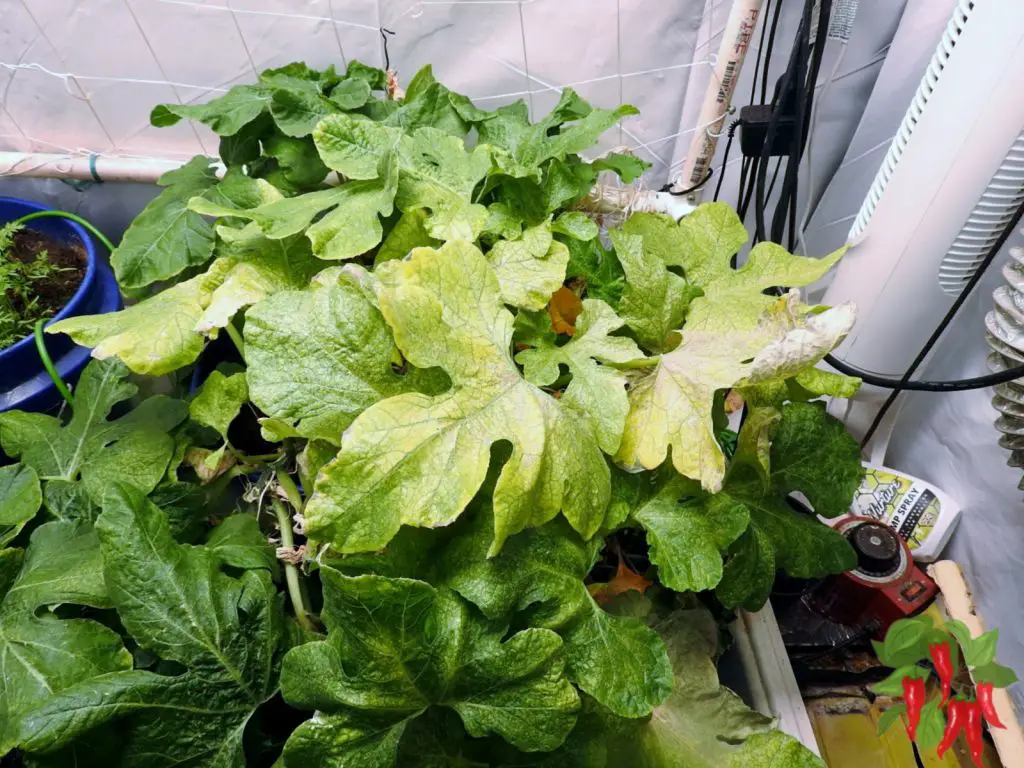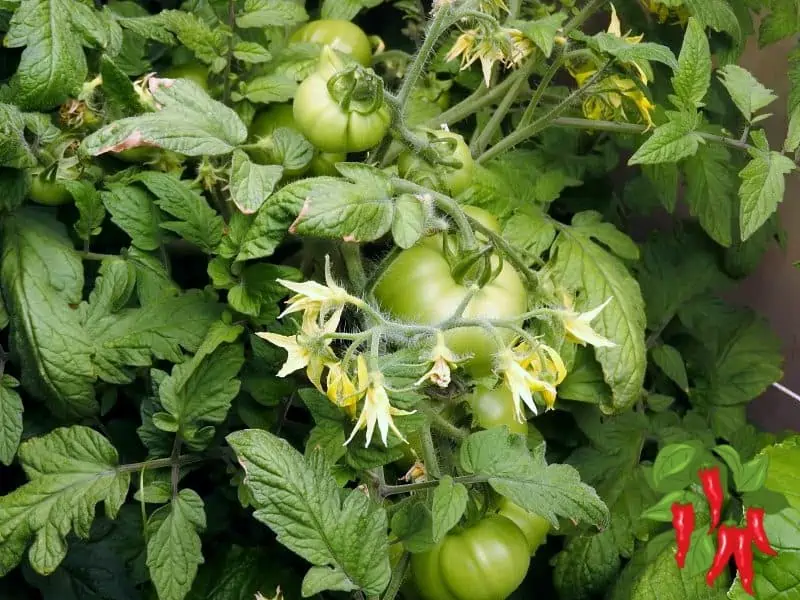This post may contain affiliate links. If you buy something from one of our links we may earn a commission. Thanks

Squash Mosaic Virus just crashed my garden party, folks! You know how it goes – one day your squash plants are thriving, and the next, they’re looking like abstract art gone wrong.
But don’t worry, I’ve got the scoop on this sneaky virus and how to keep your garden growing strong.
Squash Mosaic Virus Key Takeaways
- Squash Mosaic Virus is a plant disease affecting cucurbits like squash, cucumbers, and melons.
- Symptoms include mosaic patterns on leaves, stunted growth, and fruit deformation.
- It’s spread by aphids and cucumber beetles.
- Prevention involves controlling insects, practicing crop rotation, and using resistant varieties.
Squash Mosaic Virus: Green Onions and Carrots Too
Well, howdy everyone! Today, I’ve got a bit of a sad tale to share from my closet garden.
My poor acorn squash has fallen victim to squash mosaic virus, and let me tell you, it’s not a pretty sight.
You know how it goes sometimes – you think everything’s fine and dandy, then bam! Nature throws you a curveball.
A couple of weeks ago, I had a bit of an aphid problem. I managed to get rid of those little buggers, but it turns out they left me a nasty parting gift.
Squash mosaic virus (SqMV) is a mosaic virus disease common in squash plants and other plants, including melons, of the family Cucurbitaceae. It occurs worldwide. https://en.wikipedia.org/wiki/Squash_mosaic_virus
According to Wikipedia, it is primarily spread by beetles and not by aphids. I question this because I had aphids and not beetles. These plants may have a similar virus but they sure have something.
Now, Wikipedia will tell you that aphids don’t spread squash mosaic virus, but I’ve got to respectfully disagree.
In my case, aphids were the only pests I had, and lo and behold, about two weeks later, my squash started showing symptoms.
Speaking of symptoms, let me break it down for you:
1. You’ll see this funky mosaic pattern on the leaves – kind of cool if it wasn’t killing your plants.
2. The leaves start dying off, usually from the bottom up.
3. Your plant basically looks like it’s on its last legs, which, sadly, it probably is.
This virus is a real pain in the garden because it can affect all sorts of plants in the squash family – we’re talking cucumbers, melons, the whole cucurbit gang. It’s been around for ages, causing headaches for gardeners everywhere.
Now, I had two squash plants. The smaller one? Gone. Kaput. The bigger one is hanging on by a thread, but I don’t have high hopes. I’m leaving it for now, crossing my fingers it might ripen some fruit, but I’m not holding my breath.
Green Onions and Carrots
But hey, life goes on, right? I couldn’t let this little setback get me down. So, I’ve got two new buckets going in the same closet.
One’s full of green onions that are sprouting like crazy – gonna need some serious thinning soon. The other’s got some Nantes half-long carrots. These deep buckets should be perfect for them.
The good news? This virus is pretty much a squash family exclusive. My carrots and onions are safe from this particular menace. Silver linings, folks!
Dont Give Up
It’s a bummer to lose a crop, especially when it’s rare for me. But you know what? It can happen to anyone. Gardening is full of surprises, good and bad. That’s what keeps it interesting!
So, what’s the takeaway here? Well, keep an eye out for those pesky aphids. They might be doing more damage than you think.
And remember, while resources like Wikipedia are great, sometimes you’ve got to trust your own experiences too.
For now, I’ll be saying goodbye to my squash plant in the next week or two. Not sure what I’ll put in its place yet, but that’s the fun of gardening – always something new to try!
Take care of yourselves, everyone. Happy New Year, and happy gardening! And don’t forget – keep it green!
Conclusion: Squash Mosaic Virus
Well, folks, that’s the lowdown on my run-in with Squash Mosaic Virus. It’s been a bumpy ride, but every cloud has a silver lining, right?
Let’s wrap this up with some final thoughts and tips to keep your garden thriving.
Preventing Future Outbreaks
1. Pest Control: Keep those aphids and beetles in check!
2. Crop Rotation: Mix it up to confuse those pests and diseases.
3. Resistant Varieties: Look for squash types that can stand up to this virus.
Expanding Your Garden Horizons
1. Companion Planting: Try pairing your squash with pest-repelling buddies.
2. Container Gardening: It’s not just for small spaces – it can help isolate problems too.
3. Year-Round Growing: Don’t let one setback stop you – there’s always something new to plant!
Key Takeaways:
• Squash Mosaic Virus can affect all cucurbits, not just squash.
• Symptoms include mosaic patterns on leaves and stunted growth.
• Aphids can spread the virus, contrary to some online info.
• Quick action and isolation can help prevent spread.
• Don’t let setbacks discourage you – gardening is all about learning and adapting.
• Diversifying your crops can help mitigate risks.
• Always trust your observations and experiences in the garden.
Remember, every gardener faces challenges. It’s how we bounce back that counts. So keep experimenting, keep learning, and above all, keep it green!
Read more: Indoor Apartment Gardening: 15 Point Comprehensive Guide
Visit my Amazon Influencer Page for videos and gardening products Grow Your Own Garden






